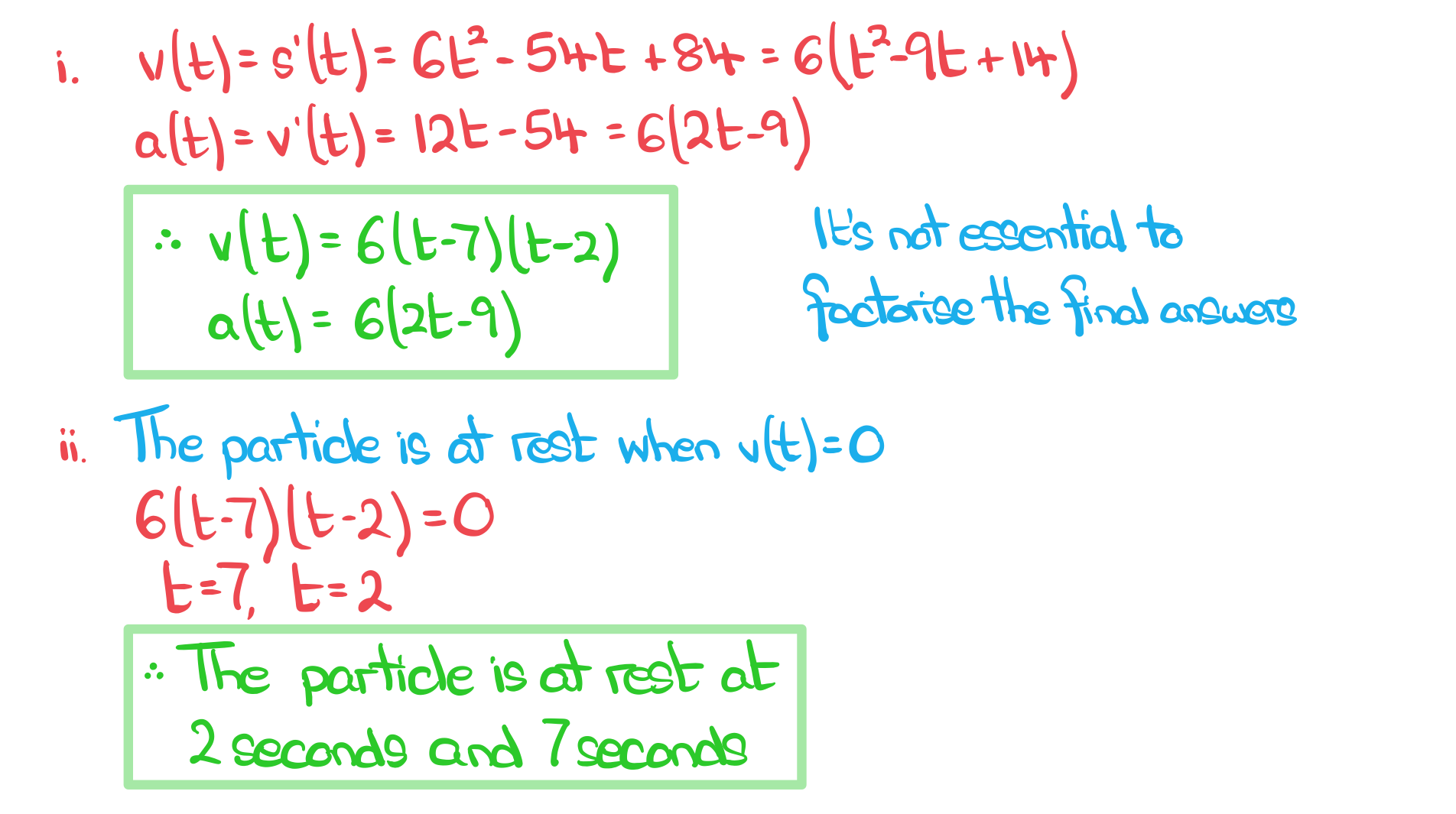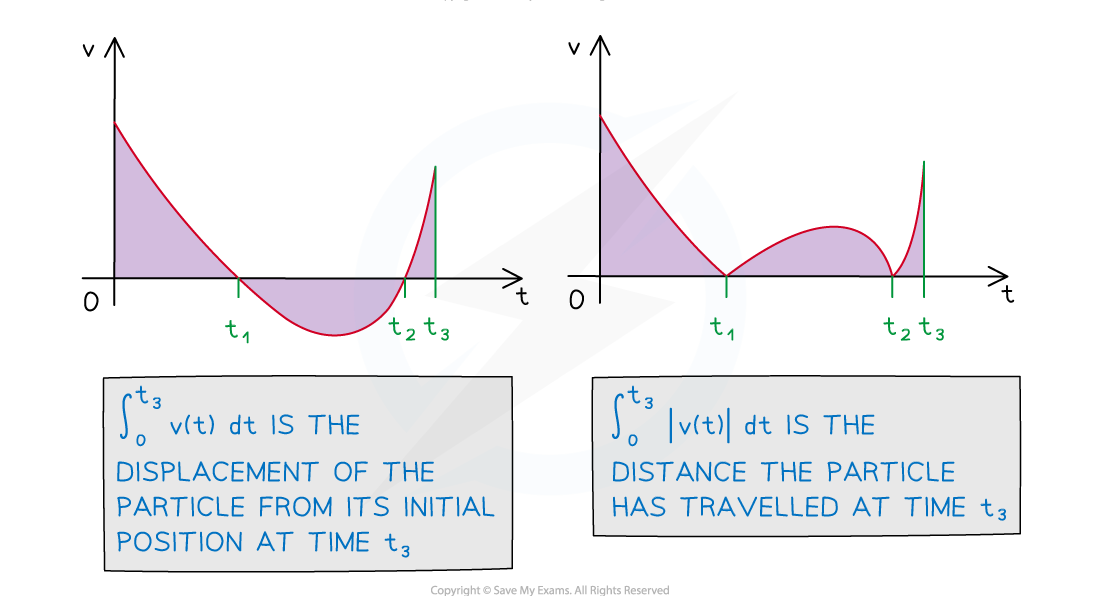Differentiation for Kinematics
How is differentiation used in kinematics?
- Displacement, velocity and acceleration are related by calculus
- In terms of differentiation and derivatives
- velocity is the rate of change of displacement
-
or
-
- acceleration is the rate of change of velocity
-
or
-
- so acceleration is also the second derivative of displacement
or
- velocity is the rate of change of displacement
- If a graph is not given you can use your GDC to draw one
- you can then use your GDC’s graphing features to find gradients
- velocity is the gradient on a displacement (-time) graph
- acceleration is the gradient on a velocity (-time) graph
- you can then use your GDC’s graphing features to find gradients
Worked Example
The displacement,, of a particle at
seconds, is modelled by
- Find
and
.
- Find the times at which the particle is at rest.

Integration for Kinematics
How is integration used in kinematics?
- Since velocity is the derivative of displacement (
) it follows that
- Similarly, velocity will be an antiderivative of acceleration
How would I find the constant of integration in kinematics problems?
- A boundary or initial condition would need to be known
- phrases involving the word “initial”, or “initially” are referring to time being zero, i.e.
- you might also be given information about the object at some other time (this is called a boundary condition)
- substituting the values in from the initial or boundary condition would allow the constant of integration to be found
- phrases involving the word “initial”, or “initially” are referring to time being zero, i.e.
How are definite integrals used in kinematics?
- Definite integrals can be used to find the displacement of a particle between two points in time
-
would give the displacement of the particle between the times
and
- This can be found using a velocity-time graph by subtracting the total area below the horizontal axis from the total area above
-
gives the distance a particle has travelled between the times
and
- This can be found using a velocity velocity-time graph by adding the total area below the horizontal axis to the total area above
- Use a GDC to plot the modulus graph
-

Exam Tip
- Sketching the velocity-time graph can help you visualise the distances travelled using areas between the graph and the horizontal axis
Worked Example
A particle moving in a straight horizontal line has velocity () at time
seconds modelled by
.
- Given that the initial position of the particle is at the origin, find an expression for its displacement from the origin at time
seconds.
- Find the displacement of the particle from the origin in the first five seconds of its motion.
- Find the distance travelled by the particle in the first five seconds of its motion.

